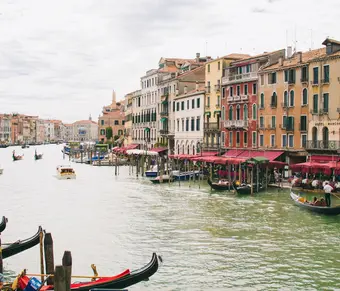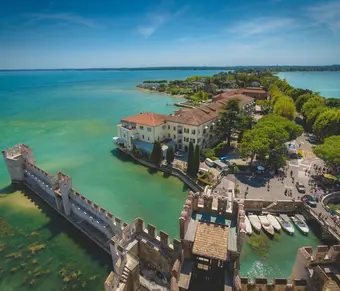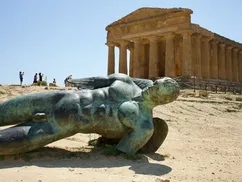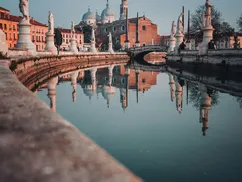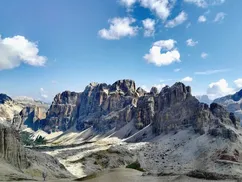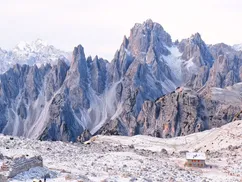UNESCO World Heritage sites: a cultural journey through time and significance
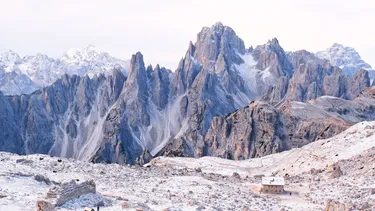
Discovering the meaning behind UNESCO World Heritage sites
Discovering the meaning behind UNESCO World Heritage sites
Across continents and centuries, UNESCO World Heritage sites remind us of humanity’s shared history — the places where art, culture, and nature converge in harmony. But what exactly is a World Heritage Site, and why are some places considered to be of Outstanding Universal Value?
The World Heritage List was created to recognize and protect landmarks that belong not only to a single nation, but to the world as a whole. From archaeological sites to national parks, these places embody humanity’s creativity, diversity, and connection to the planet.
The World Heritage Convention and its legacy
The foundation for the World Heritage List lies in the 1972 World Heritage Convention, adopted by the United Nations Educational, Scientific, and Cultural Organization (UNESCO). Its purpose was simple yet profound: to ensure the protection of the world's cultural and natural heritage for future generations.
Today, 196 States Parties have ratified this convention, forming a global network committed to conservation and awareness. The General Conference of UNESCO oversees the implementation, while the World Heritage Committee decides which sites are added to or removed from the list.
Born from early international campaigns — such as the effort to save the Abu Simbeltemples in Egypt during the construction of the Aswan High Dam — the Convention represents a turning point in how humanity protects its shared heritage.

How sites are chosen and protected
Every year, countries submit new candidates to be inscribed on the World Heritage List. These nominations, prepared by the States Parties, undergo a rigorous evaluation process to determine whether a site meets the required criteria of Outstanding Universal Value.
The World Heritage Committee, supported by advisory bodies like ICOMOS (for cultural heritage) and IUCN (for natural heritage), assesses each proposal. Once approved, the site officially becomes part of the UNESCO World Heritage List and gains international recognition and protection.
What makes a site worthy: cultural and natural criteria
A World Heritage Site can be cultural, natural, or mixed.
- Cultural sites include monuments, historic cities, temples, and works of art that reflect human creativity — from the Pyramids of Giza to the Historic Centre of Rome;
- Natural sites celebrate biodiversity and geology — like Yellowstone National Park or the Galápagos Islands;
- Mixed sites combine both, such as Mount Etna in Italy or Machu Picchu in Peru, where human and natural forces intertwine.
To be inscribed, a property must demonstrate Outstanding Universal Value, meaning it is an outstanding example of a cultural tradition, a masterpiece of human creative genius, or an exceptional natural phenomenon.
Once listed, UNESCO monitors each site’s state of conservation, offering support through the World Heritage Fund to ensure that these places — whether cathedrals or coral reefs — remain protected for generations to come.
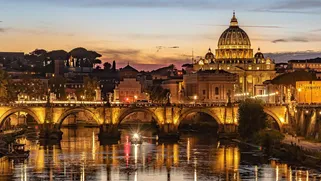
Iconic UNESCO World Heritage sites to know in 2025
As of 2025, the UNESCO World Heritage List includes more than 1,200 sites across 168 countries, with new inscriptions added every year. These include ancient temples, archaeological sites, national parks, and entire historic town centres that reflect the world’s cultural and ecological diversity.
From temples to national parks: a global collection
Some sites are instantly recognizable — the Great Wall of China, the Acropolis of Athens, or the Grand Canyon National Park. Others are lesser-known yet equally remarkable, such as the Rock Islandsof Palau or the Old Bridge of Mostar in Bosnia and Herzegovina.
UNESCO’s 2025 list also features new additions that celebrate both cultural and natural excellence — from ancient irrigation systems in the Middle East to newly protected wetlands in Europe that safeguard ecological and biological diversity.
However, inclusion on the list is not permanent. Sites can be removed from the list if their integrity or value is lost, as happened with the Dresden Elbe Valley in Germany after the construction of a bridge that compromised its landscape. This shows the ongoing balance between development and preservation that the World Heritage Committee must manage carefully.
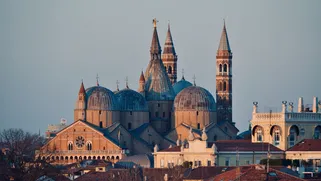
Italy’s presence on the UNESCO World Heritage list
Italy is home to more UNESCO World Heritage Sites than any other country in the world — over 50, each telling a story of art, spirituality, and craftsmanship. From ancient Rome to the Dolomites, every corner of Italy holds traces of universal beauty and creativity.
Religious, artistic, and monumental treasures
In Northern Italy, several remarkable sites reflect centuries of cultural evolution and human expression:
- The Cathedral of Modena and the Ghirlandina Tower: masterpieces of Romanesque art, symbolizing medieval spirituality and civic pride.
- The Botanical Garden of Padua: the world’s oldest university botanical garden still in its original location, celebrating science and biodiversity since 1545.
- The Last Supper by Leonardo da Vinci in Milan: preserved inside the Convent of Santa Maria delle Grazie, this Renaissance icon illustrates the fragility of genius and time.
- The City of Vicenza and the Palladian Villas of the Veneto: architectural wonders designed by Andrea Palladio, representing harmony, proportion, and innovation.
- The Rock Drawings in Valcamonica: over 140,000 prehistoric engravings depicting rituals, hunts, and symbols of early human spirituality.
- The Sacri Monti of Piedmont and Lombardy: devotional complexes nestled among the Alps, combining nature, art, and architecture in an extraordinary example of faith expressed through landscape.
Italy’s heritage also includes properties under the Holy See, such as the Vatican City and its extraterritorial rights in Rome — including San Paolo Fuori le Mura — which symbolize the continuity between art, religion, and diplomacy across centuries.
These sites together demonstrate how cultural and natural heritage form a living mosaic of Italy’s identity, admired worldwide.
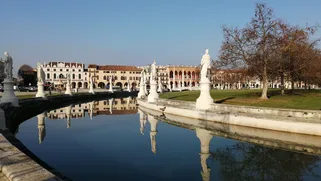
The role of UNESCO sites in responsible tourism
Each World Heritage Site carries an outstanding valuetohumanity, but that value must be matched with care and responsibility. As global travelers, we play a vital role in preserving these fragile treasures.
Responsible tourism at UNESCO sites means understanding their meaning, respecting their environment, and contributing positively to local communities. This approach aligns with the idea that traveling is not just about seeing, but about learning, connecting, and protecting.
Travel with awareness: visiting World Heritage sites
When planning to visit a place on the list, it’s worth researching its cultural and ecological background. Many World Heritage Centres now offer interpretive programs, guided tours, and educational initiatives to help visitors engage more deeply with the sites they explore.
Simple gestures — staying on marked paths, respecting conservation rules, supporting local artisans — help preserve the integrity of these extraordinary places.
As we look toward 2025, UNESCO continues to expand awareness campaigns that invite travelers to visit new sites added to the list, from rewilded natural parks to revitalized historic town centres. Each visit becomes part of an ongoing story of stewardship and respect.
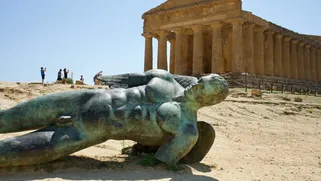
Ready to explore UNESCO World Heritage in the Dolomites?

Among Italy’s most celebrated entries on the UNESCO World Heritage List are the Dolomites, inscribed in 2009 for their exceptional natural beauty and geological significance. These mountains — with their pale limestone peaks and ever-changing light — represent one of the most extraordinary natural World Heritage Sites on Earth.
The Dolomites embody the principles of UNESCO: the fusion of natural and cultural heritage, where ancient traditions coexist with spectacular landscapes. Here, every valley tells a story — of mountain life, language, craftsmanship, and respect for nature.
At InfoDolomites, we help travelers experience this Outstanding Universal Value firsthand. Whether you wish to explore the geological wonders of the Dolomiti di Sesto, admire the alpine meadows of Val di Funes, or walk the panoramic trails of Seceda, our tailor-made tours connect you with the spirit of these mountains.
We design journeys that combine comfort, discovery, and authenticity — always with a focus on sustainability and cultural respect.
→ Contact usto start planning your cultural journey across the UNESCO World Heritage Dolomites.

